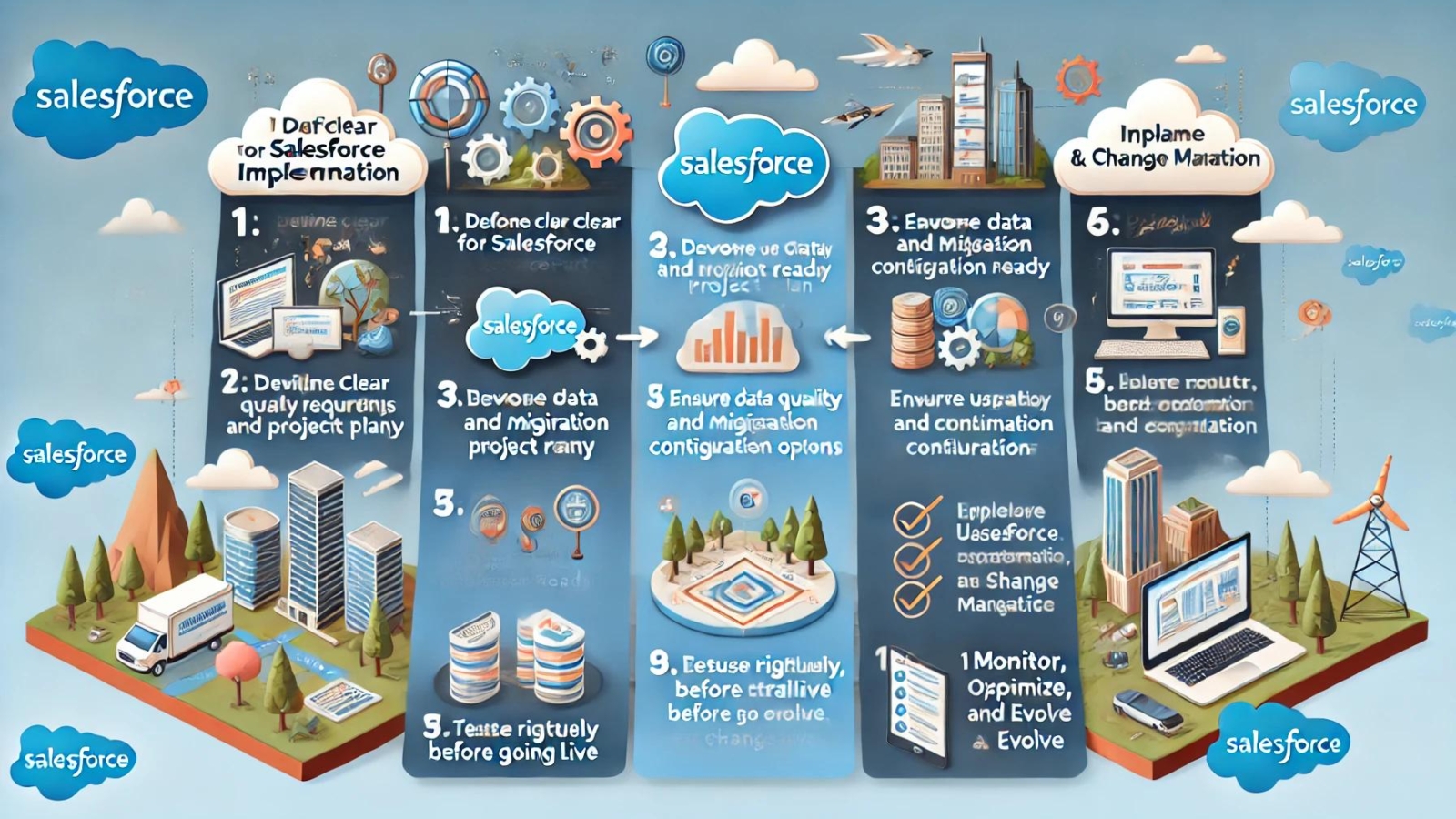Salesforce Implementation Best Practices: A Comprehensive Guide
Implementing Salesforce, the world’s leading customer relationship management (CRM) platform, can significantly transform your business by streamlining operations, enhancing customer interactions, and driving growth. However, a successful Salesforce implementation requires careful planning, strategic decision-making, and adherence to best practices. This guide outlines the essential steps and best practices to help you get the most out of your Salesforce investment.
1. Define Clear Objectives and Requirements
Before starting the implementation, it’s crucial to define what you want to achieve with Salesforce. Are you aiming to improve sales processes, enhance customer service, or integrate marketing activities? Set clear, measurable goals and align them with your overall business strategy. Identifying your needs will guide you in choosing the right Salesforce products and features.
- Tip: Involve stakeholders from different departments to gather comprehensive requirements. This ensures that the solution meets the needs of all users.
2. Choose the Right Salesforce Partner
Salesforce implementation can be complex, especially for larger organizations. Engaging a certified Salesforce consulting partner can help ensure a smooth and successful deployment. Partners bring expertise, best practices, and industry-specific knowledge to the table.
- Tip: Look for a partner with relevant experience in your industry and a proven track record of successful Salesforce implementations.
3. Develop a Detailed Project Plan
A well-structured project plan is the backbone of a successful Salesforce implementation. Outline each phase of the project, including key milestones, deliverables, and timelines. Assign responsibilities to team members and set realistic expectations.
- Tip: Include a risk management plan to identify potential challenges early and develop strategies to mitigate them.
4. Ensure Data Quality and Migration Readiness
Data is the lifeblood of any CRM system. Before migrating data to Salesforce, assess its quality. Cleanse and de-duplicate data to ensure accuracy. Develop a data migration strategy that includes mapping fields from your legacy systems to Salesforce.
- Tip: Perform a test migration with a small data set to identify any issues before the full-scale migration.
5. Leverage Salesforce’s Customization and Configuration Options
Salesforce is highly customizable, allowing you to tailor the platform to fit your business processes. Utilize Salesforce’s customization options like custom objects, fields, workflows, and page layouts to align the platform with your specific needs. Avoid over-customization, which can lead to higher maintenance costs and complexity.
- Tip: Start with out-of-the-box features and add customizations incrementally based on user feedback and evolving business needs.
6. Focus on User Adoption and Training
User adoption is critical to the success of your Salesforce implementation. Invest in comprehensive training programs to help users understand the platform’s features and benefits. Provide ongoing support and resources to ensure users are comfortable and confident using Salesforce.
- Tip: Use Salesforce’s Trailhead, an interactive learning platform, to train users and encourage continuous learning.
7. Implement Robust Security Measures
Protecting sensitive customer data is essential. Salesforce offers a range of security features, such as two-factor authentication, data encryption, and role-based access controls. Configure these settings to match your organization’s security policies.
- Tip: Regularly review and update your security settings to stay ahead of potential threats.
8. Test Rigorously Before Going Live
Conduct thorough testing to ensure your Salesforce setup works as intended. This includes unit testing, integration testing, user acceptance testing (UAT), and performance testing. Testing helps identify and resolve any bugs or issues before the system goes live.
- Tip: Involve end-users in UAT to get real-world feedback and ensure the platform meets their needs.
9. Plan for Change Management
Salesforce implementation often requires changes in business processes and workflows. Develop a change management plan to help users transition smoothly. Communicate the benefits of the new system, address concerns, and provide adequate support throughout the change process.
- Tip: Appoint change champions within each department to advocate for the new system and assist colleagues.
10. Monitor, Optimize, and Evolve
Salesforce implementation is not a one-time event but an ongoing process. Regularly monitor performance and gather feedback from users to identify areas for improvement. Utilize Salesforce’s analytics tools to measure key metrics and make data-driven decisions.
- Tip: Stay updated with Salesforce’s new features and releases to take advantage of new capabilities that can further optimize your operations.
Conclusion
A successful Salesforce implementation can drive significant business growth, enhance customer relationships, and improve operational efficiency. By following these best practices—defining clear objectives, planning meticulously, ensuring data quality, focusing on user adoption, and continuously optimizing—you can maximize the value of your Salesforce investment.

